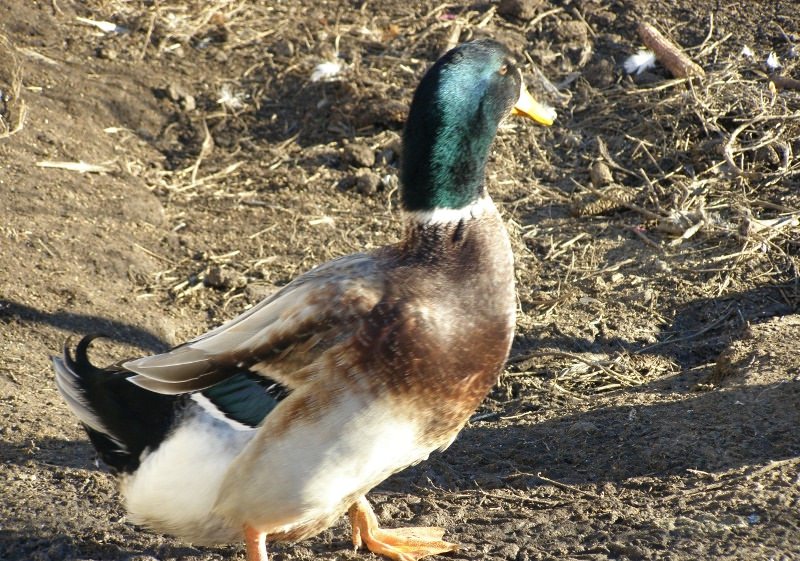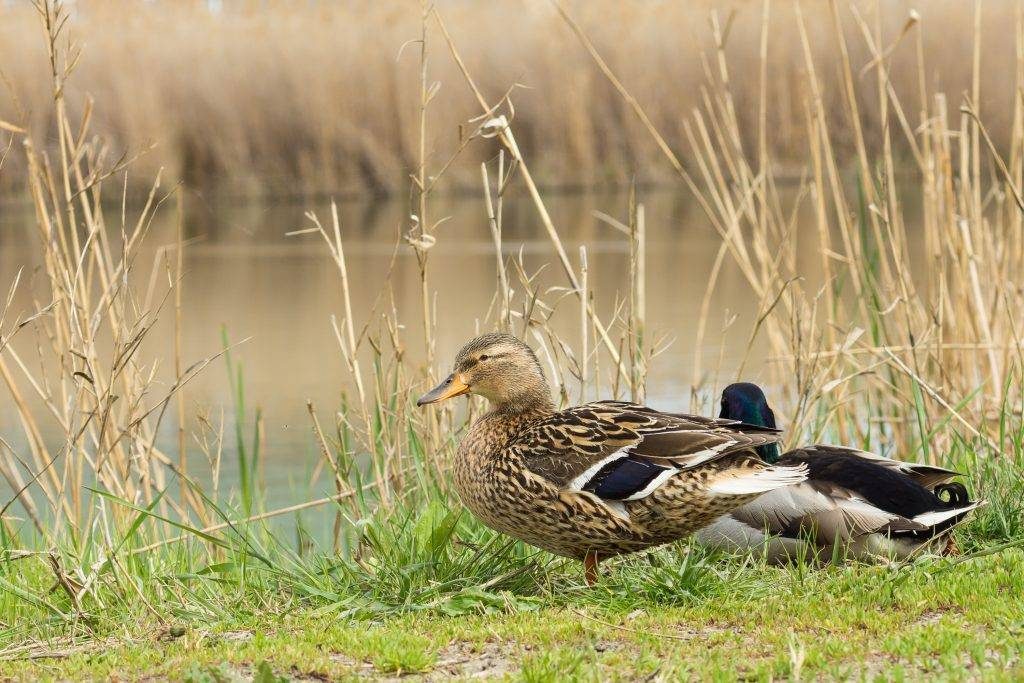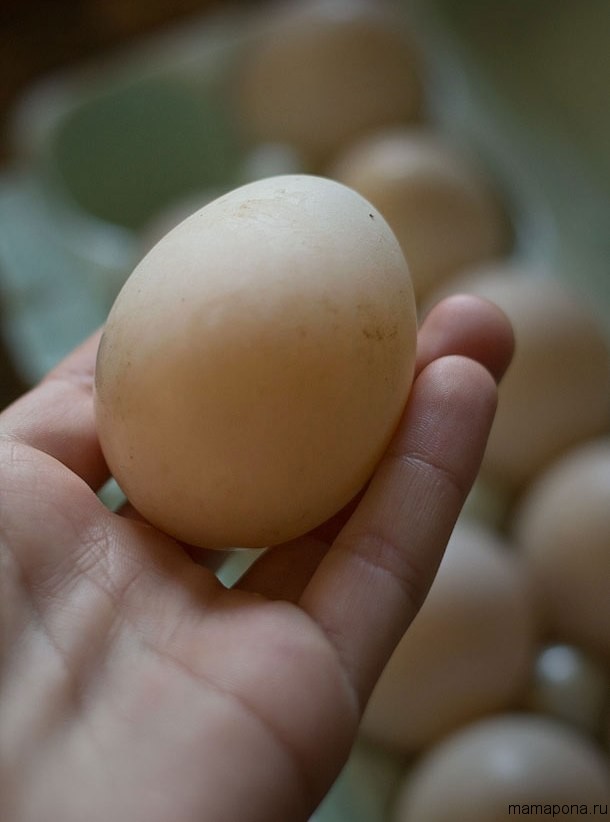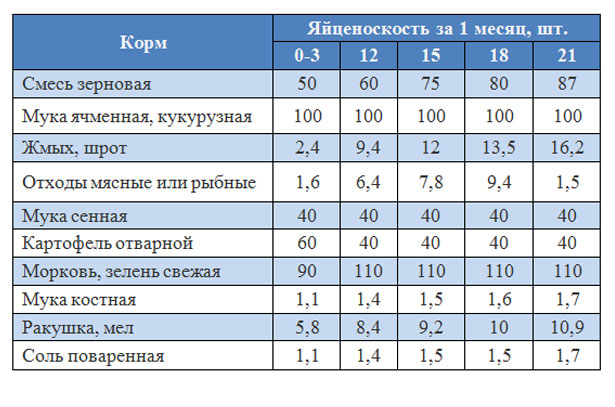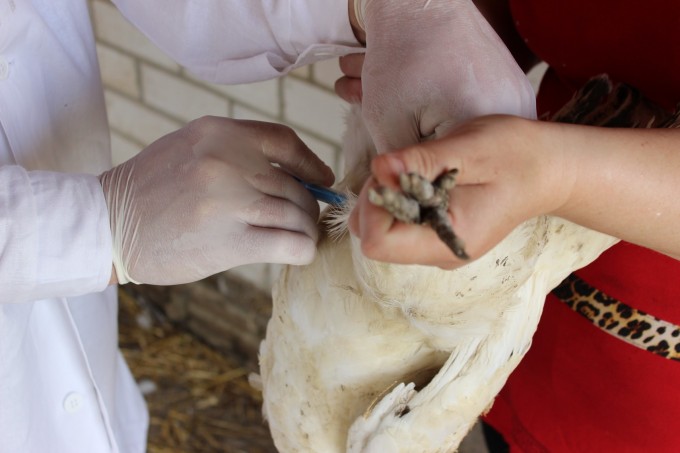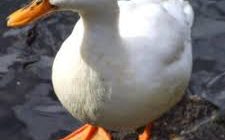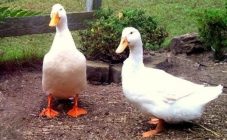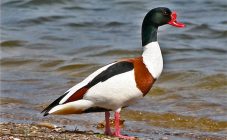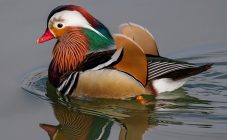Content:
Duck meat contains a large amount of B vitamins and other trace elements. It was widely used in medical practice in ancient China. Duck has been proven to be a source of amino acids. The poultry reaches its weight in a short time, its meat has a juicy consistency. In addition, the duck produces good quality down. The presence of all these advantages helps poultry breeders to make a choice in favor of this particular type of birds for breeding in households or farms.
Breed information
By the name of the breed, you can determine the country of its breeding - Bashkortostan. This breed of poultry was obtained by accident: when conducting experiments aimed at improving the characteristics of the White Peking duck breed, breeders noticed among them individuals that differed in appearance. This difference was manifested in the fact that the birds were of a different color, stronger constitution and had a beautiful appearance. Thus, the Blagovarsky poultry breeding plant, whose location is Bashkiria, soon developed a new breed of duck - the beautiful Bashkir, recommended both for breeding in households and on an industrial scale.
The Bashkir duck is distinguished by a strong and muscular body with a protruding chest region. The size of the paws is large, the length is short, with a wide arrangement relative to each other. The shape of the head is flattened on top. The length of the neck is short, the shape is concave, with a curvature to the outside.
The beak has a wide concave shape, and there is also an outgrowth designed for grasping grass. The wing fits snugly to the body.
The keel is elongated, well developed. There are two types of Bashkir duck:
- white color;
- colored individuals.
The color of the plumage is the initial sign of the difference between individuals of the Bashkir breed of ducks. The color plumage of birds bears significant similarity with the color of birds of this species living in natural conditions.
Lightening of the feather is noted from the back to the abdominal region. The color of the beak and paws is bright orange.
The color of the drake is somewhat brighter. On the 35th day after hatching, the plumage of the bird acquires a black-gray tint in the head, upper neck, tail and other parts of the body.
This breed has some features:
- unimpeded movement on snow and ice cover is ensured due to the absence of nerve endings and blood vessels;
- unprocessed duck feathers cannot be exposed to water for many years;
- the drake does not make quacking sounds;
- the Bashkir duck quacks without an echo;
- in the cervical region of the duck, despite the short neck length, there are more vertebrae than in the giraffe.
The female Bashkir duck is distinguished by its temperament, which has a positive effect on the weight of the bird and the indicator of how many eggs it is capable of laying, regardless of the breeding conditions. The results of the forums held with the participation of private farms on the discussion of the peculiarities of the breeding of birds did not differ in effective indicators when they were kept in cages, in pens or with a combined method, in compliance with grazing.
At Russian poultry farms, they prefer to use this particular species of birds for growing for a number of reasons:
- the Bashkir duck has good immunity to infectious diseases;
- the reproductive rate of the breed is at a high level;
- keeping a livestock of birds does not require unreasonably high financial costs.
The weight of an adult drake is 4 kilograms, of a female - 3.8 kilograms.
The minimum content of adult poultry meat is 75%. With proper care, the weight of a month's duck can reach 3.5 kilograms.
The gastronomic properties and structure of the meat are comparable to those of the best broiler breeds. Due to the lack of a specific smell, the meat of the Bashkir breed is one of the best-selling market outlets and supermarkets.
Medical indications for the use of this meat product:
- the double content of vitamin A makes duck meat recommended for including a recipe with this animal product in the menu of a patient with skin and vision problems;
- duck fat contains omega acids, just like olive oil;
- Allergy sufferers are advised not to add duck or eggs as part of their menu.
The Bashkir breed is a type of meat-bearing breeds. The egg production indicator is due to the specific color of the bird, of which there are two types:
- individuals with a khaki color produce about 200 eggs during almost 300 days of being in the reproductive stage;
- "Black white-breasted" birds lay 230 eggs during the same number of days.
A number of factors affect the fluctuations in the numbers of the egg production indicator:
- external conditions;
- features of the diet;
- the number of individuals included in the livestock;
- weather conditions.
The average egg weight is 75 grams. Incubator setting implies hatching of 80% of young stock.
Features of the use of duck eggs:
- A 100-gram raw egg contains 185 Kcal, which makes this animal product quite high in calories;
- in order to avoid salmonellosis infection, it is not recommended to eat raw eggs;
- duck egg - a highly effective ingredient for creating hair masks for split ends and hair loss;
- protein is able to dry oily skin;
- a whole duck egg is a good mask for combination skin.
Caring for the Bashkir breed
A kilogram of growth requires, on average, 2.7 kilograms of feed. In addition, green and juicy feed in the amount of 2 kilograms should be gradually introduced per kilogram of growth. The indicators listed above allow you to calculate the amount of feed required to obtain one egg.
The presence of a container with water next to the feeders is a prerequisite for creating a daily diet. The water should not darken or stagnate. In order to avoid the spread of any infectious diseases, the water must be changed periodically.
The following features of the description of the Bashkir duck should be taken into account:
- for one adult bird you need 2 liters of water per day;
- duck has a short digestion cycle.
How to breed at home
When choosing an incubation method, you should adhere to certain rules:
- The egg should be fresh under the setting - it should be stored for no more than 5 days at an average temperature of + 10 ° C. Also, it should be free of defects and chipped areas with cracks. Concave or curved areas on the surface of the shell also indicate that the egg is not suitable for incubation.
- Before placing on the bookmark, the eggs are disinfected using a weak potassium permanganate solution.
- Placement in the incubator is carried out for 7 days, subject to + 38 ° C air temperature and 70% humidity.
- It is necessary to turn over 4 times a day.
- In the period of 8-15 days, the level of air exchange should be increased, the temperature should be reduced to 36 ° C and the air humidity should be reduced by 10%.
- Turn 5 times a day.
- In the period of 15-24 days, a cooling procedure is added, carried out twice a day for 15 minutes.
- On the 24-27th day, young animals hatch. At this time, the humidity level should be increased to 90% in order to soften the shell.
- Turn each egg over.
Following the above recommendations, a brood of new livestock will appear at the same time.
For hens and young animals, it is necessary to create special conditions of temperature and lighting, where animals should be placed. The litter should remain warm for 5 days.
The temperature in the place where the ducklings are kept should be reduced if the following signs are present:
- open beak;
- drooping of the wings;
- no reaction to feeding;
- high water consumption.
The second week implies a 1 hour reduction in the duration of exposure to light every day when the 9-hour daily target is reached. 9-hour daylight hours continue until the ducklings stop growing.
The litter is changed in a room with young livestock every 2 days. Any drafts in the room are unacceptable. The required air humidity is 70%.
What food to give young animals
The diet of young livestock does not differ from the food of adults of the Bashkir duck breed, which can be defined as the following plant components:
- grain rub;
- clover;
- carrot;
- cabbage;
- beet;
- boiled potatoes;
- food residues.
The percentage of addition of green food can begin to increase as the Bashkir ducklings grow. The feed must be fresh.
Dry food and clean water should be placed in separate containers. The finished combined feed must contain all the necessary trace elements.
With a deficiency of sulfur-containing amino acids, an instant loss of plumage occurs. Ducks are released into the reservoir when they reach 3 months of age. Gravel in the form of 4 mm fractions can either be added to duck feed or poured into a separate container. After 3 weeks, the first feeding of food waste is acceptable.
To prevent solanine poisoning, when adding boiled potatoes, the water must be drained.
The Bashkir duck stops growing at 2 months of age, after which the molt stage begins.
Prevention and treatment of diseases
Measures for the prevention and treatment of diseases are:
- Keeping litter dry.
- Compliance with cleanliness in the place where the livestock is located.
- Treatment of the premises before hatching of the young with bleach (dry for 4 days).
- Vaccination.
- Separation of young of different ages.
- Isolation of sick birds.
Advantages and disadvantages of the Bashkir breed
Many poultry farmers, before starting to breed these birds, wonder what the advantages and disadvantages of the Bashkir duck have.
So, the list of advantages of the Bashkir duck breed includes the following indicators:
- 80% hatchability of young animals;
- high resistance to infectious diseases;
- unpretentiousness to breeding conditions;
- easy care;
- fast weight gain;
- lack of fat on the carcass;
- early laying of eggs;
- assiduous bird temperament;
- small expenses on maintenance;
- decorative look of a drake.
The list of shortcomings includes that the ducks of the Bashkir breed have:
- the need for constant replacement of litter;
- frequent water changes;
- the characteristic of the colored Bashkir duck of khaki color is a low egg production rate.
This breed is chosen both for raising Bashkir ducklings in private households and for an industrial scale. With a significant list of advantages, the disadvantages almost do not affect the process of breeding Bashkir ducks at home.
